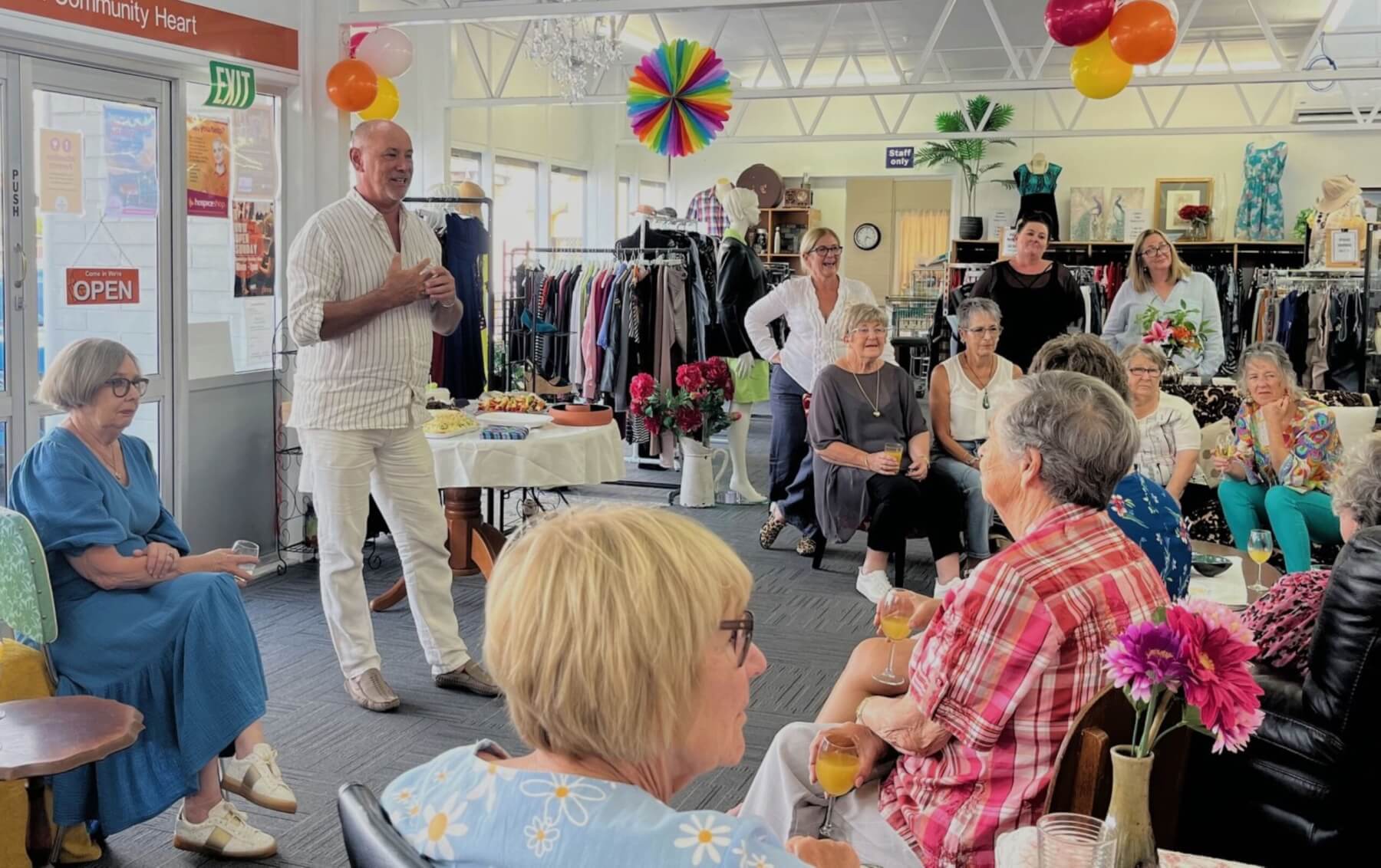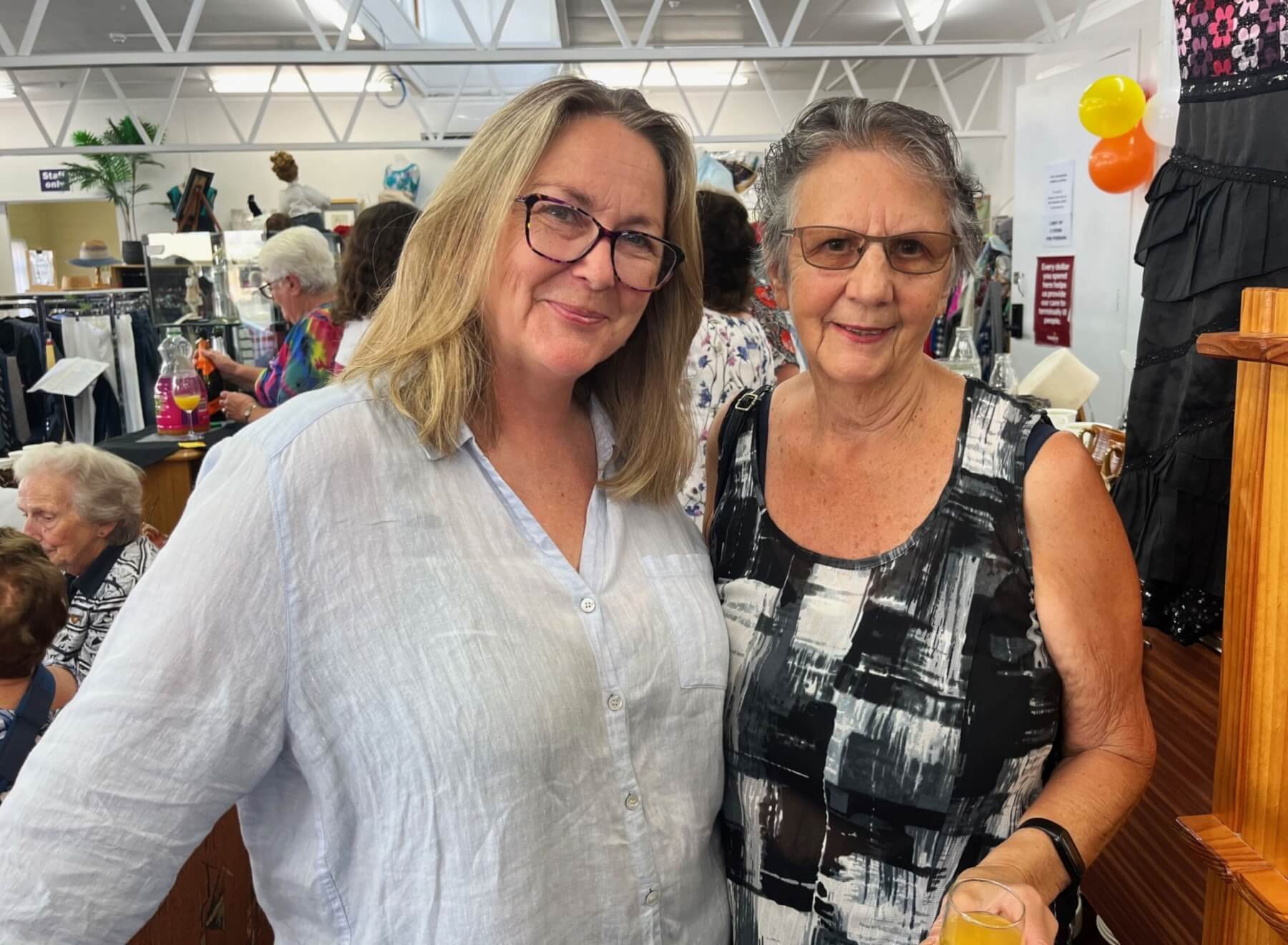The demand for hospice services is growing – but as Hospice Waikato chief executive Craig Tamblyn tells Viv Posselt, funding is inadequate and the organisation is confronted with obstacles.
Craig Tamblyn says in addition to challenges linked to the funding of hospice services there are concerns around what health reforms might be just around the corner – and their potential impact.
“The health reforms came in after Covid and are taking a lot longer than thought… right now, we’re unsure when they will drop and what they could mean for us.”
Other pressing concerns he said need addressed are linked to pay parity in the sector, projected growth in demand, and questions on the sustainability of community fundraising at the level now needed.
Free hospice care is delivered to New Zealand patients and their families through 32 hospices nationwide, all falling under Hospice New Zealand. Income comes through a mix of crown and community funding, with the latter generated through hospice shop outlets, business support and community fundraising. There are nine hospice shops across the Waikato.
The percentage of government v community input varies among individual hospices with government funding generally covering between 50 to 60 percent of each hospice’s costs. In some cases, however, the government proportion falls below that.
In the Waikato, the community funds 35 percent of Hospice Waikato’s needs.

Hospice Waikato chief executive Craig Tamblyn talking to Cambridge Hospice Shop last month.
According to Hospice New Zealand figures, it cost over $186 million to provide free hospice care in the 2021-22 year, up $11.2 million on the previous year. Government funding covered $92.1 million of that and hospices raised over $94 million from their communities to bridge the gap.
With Waikato as one of the country’s fastest-growing population areas, and the burgeoning numbers of seniors choosing to spend their twilight years here, the need for hospice services is expected to rise considerably, said Tamblyn.
Our area covers from Mercer to National Park, the Coromandel to Tokoroa and across to Raglan. We’re seeing significant growth across the district, but particularly in the Coromandel and from Te Awamutu through Ōtorohanga and Te Kuiti.
“Some 95 percent of our patients don’t come into our Hospice Waikato site in Hamilton for more than a few days at a time, but instead receive our services at home. That means we rely on a network of skilled personnel who can deliver those services where they’re needed. Waikato’s growth will have a huge impact on us and we need to be ready for it.”

Cambridge Hospice Shop manager Justine Webb-Elliott (left) with volunteer Mary Denize. Tamahere-based Mary, who is a long-time volunteer at the local store, also volunteers with the inpatient unit at Hospice Waikato in Hamilton.“
Hospice care goes well beyond the delivery of palliative care to the patient involved. Once a family registers with hospice, the patient and their wider family receive holistic care for as long as is needed, and many whānau receive support for up to 18 months after the death of their loved one.
Concerns around the level of future government funding centres on differing political party views around healthcare delivery expressed before last year’s general election.
On the strength of Prime Minister Christopher Luxon’s pre-election statement, “we’ll look at boosting funding for palliative care once we are in government”, Hospice New Zealand briefed Health Minister Shane Reti on the situation in December. The briefing lists three core elements needed by the sector from the government – pay parity for hospice staff, support for the development of a business case for a fairer and more sustainable funding model to be included in Budget 2025, and for regular engagement to keep things on track.
Tamblyn said pay parity was a crucial element for future sustainability.
“We are currently in negotiations with government for our nurses to be paid the same rate as in other sectors. Government funding has not kept up and they are currently lagging well behind their peers working in other health areas. There should be pay parity for all specialists working in hospice”.
Tamblyn said Hospice Waikato is also working to reduce rural and cultural inequities in the district, and to further support Hamilton-based Rainbow Place, which until recently was the only hospice for children in the country.
He said he was ‘optimistic, but realistic’ that hospice requests could be met by a government facing a long list of issues needing attention.
The Numbers
Hospice Waikato is one of the busiest in the country. It currently deals with around 1600 patients and their families a year but is projecting a significant increase in those numbers as the region grows.
Figures to the end of June 2023 show that of the $14,933,041 income, $8,415,507 was government funding. A sum of $4,607,335 was sourced from hospice shop revenue, with the remaining income generated through fundraising, grants and donations.
Costs for the same period came in at $15,126,883, resulting in a $193,842 deficit.
A total of 1436 people were referred to Hospice Waikato during the 2022/23 year, and 1607 patients and families were in hospice care during the same period. Between 400 and 500 patients are being cared for by Hospice Waikato at any one time, and about 50 seriously ill children and their families are supported the Rainbow Place team at Hospice Waikato.







